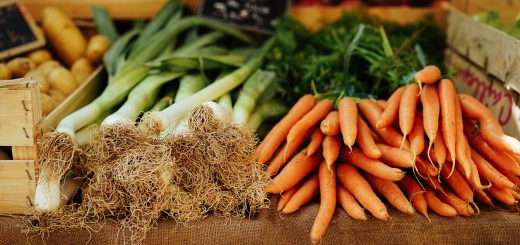The Origin of Farm to Fork and Its Role in Your Health
Farm to fork is a movement that has been growing since the early 2000s. It has been gaining momentum and popularity in recent years. The idea of the farm-to-fork movement is to reduce food miles, or the distance food travels from where it is grown to where it is eaten.
The goal of this movement is to promote sustainable agriculture and make sure that people are eating healthy, fresh, local produce. It also aims at reducing the amount of waste produced by transporting food from one place to another.
Getting to Know Farm to Fork

The Farm to Fork initiative is a program that encourages the use of locally grown food in schools. The goal is to educate children on the importance of eating healthy and sustainable food.
The Farm to Fork initiative was created by the USDA, which has been working with local schools to implement this program. This program aims to teach children about where their food comes from, and how it affects their health. The goal is for students to be more aware of what they eat and how it can affect their physical health as well as their mental health.
What is the Benefit of Eating from Farm Fresh Food?
Organic farming is a sustainable form of farming that has been gaining momentum in recent years. With organic farms, the focus is on natural methods and healthy living.
Organic food benefits are many, and the most important one is that it has a lower carbon footprint than conventional food. Organic farming also helps to protect the environment by not using any synthetic fertilizers or pesticides. The soil on organic farms is healthier due to not being depleted of its nutrients and because of this, it produces higher quality food, which means better health benefits for consumers.
How does Farming Contribute towards More Sustainable Living?
The idea of sustainable living is not new. It has been around for a while, and it’s getting increasingly popular. More people are trying to live a more environmentally friendly life with the help of sustainable practices and farming.
As mentioned before, farming is one of the most environmentally friendly practices out there, not just because it provides food for us but also because it can contribute towards more sustainable living practices.
What are the Advantages of the Farm to Fork Movement?
The advantages of this movement include: improved health from eating fresh produce, reduction in the use of farm chemicals and pesticides, support for local farmers and economies by buying locally grown produce, reduced food miles (which reduces carbon footprint), increased awareness about what we eat.
What are the Disadvantages of a Farm to Fork Movement?
The farm to fork movement has many advantages and few disadvantages.
The farm to fork movement has many advantages, such as supporting local farms, improving the environment, and providing fresher food. However, there are also a few disadvantages of this movement. For example, it is more expensive than other methods of food distribution. In addition, it is not as efficient because it takes more time for the food to be delivered from the farm to the consumer’s plate.
Conclusion: The Future of the World Food Industry with a Focus on Farm to Fork
The future of the world food industry is looking bright. The farm to fork movement is picking up and a number of startups are trying to solve the problem of food waste. With less than one-third of food produced for human consumption, it is not surprising that we have such a high rate of wastage. But with better technology and new innovations, we will be able to feed the world in a sustainable manner.













